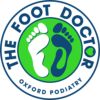- Your cart is empty
- Continue Shopping
The Foot Doctor specializes in the treatment of diabetic foot care and routine foot pain. Let us help you get back on your feet again.
The Foot Doctor specializes in the treatment of diabetic foot care and routine foot pain. Let us help you get back on your feet again.
Athlete’s foot is caused by the same type of fungus that causes ringworm and jock itch. Damp socks and shoes and warm, humid conditions favor the organisms’ growth.
Athlete’s foot is contagious and can be spread by contact with an infected person or from contact with contaminated surfaces, such as towels, floors and shoes.
You are at higher risk of athlete’s foot if you:
Your athlete’s foot infection can spread to other parts of your body, including:
These tips can help you avoid athlete’s foot or ease the symptoms if infection occurs:
You might experience pain, soreness or tenderness anywhere in the heel. You typically feel heel pain:

Several problems can cause pain to develop in the back of the heel:
Heel pain symptoms vary depending on the cause. In addition to pain, you may experience:
Your healthcare provider will assess your symptoms and perform a physical exam. You may also get X-rays to check for arthritis, bone fractures, bone alignment and joint damage.
Rarely, you may need an MRI or ultrasound. These can show soft tissue problems which X-rays don’t reveal.
Heel pain can interfere with your ability to get around, work, exercise and complete daily tasks. When it hurts to move, you can become sedentary. An inactive lifestyle can lead to weight gain. You may also become depressed because you can’t do the things you love.
Untreated Achilles tendonitis can cause the tendon to break down (tendinosis). In time, the Achilles tendon can tear or rupture. This problem may require surgery.
Most problems that cause heel pain get better over time with nonsurgical treatments. Therapies focus on easing pain and inflammation, improving foot flexibility and minimizing stress and strain on the heel. These treatments include:
It’s rare to need surgery to treat most causes of heel pain.
To prevent heel pain or keep pain from returning, it’s important to keep your foot and heel tendons flexible. You should stretch regularly and wear properly fitted, supportive shoes. Runners are especially prone to heel pain. You can prevent running injuries by covering fewer miles and running on softer surfaces.
You may want to ask your healthcare provider:
A note from Cleveland Clinic
Heel pain often improves over time with nonsurgical treatments. Your healthcare provider can determine what’s causing the pain. Your provider can also show you stretching exercises and recommend orthotics and other methods if needed. Many people try to ignore heel pain and continue with activities that make the problem worse. But it’s essential to give your body time to recover. Otherwise, you may develop chronic heel pain that sidelines you for an extended time. The longer you have heel pain the harder it is to effectively treat, so it’s important to get evaluated.
Heel pain typically goes away with nonsurgical treatments, but recovery takes time. You need to be patient and give your body time to mend. If you return to your usual activities too quickly, it can set back your recovery. In rare situations, you may need surgery.
You should call your healthcare provider if you experience:

The Foot Doctor provides full Podiatry services to eliminate any foot pain or discomfort. Learn more about some of the specific services we provide.
We can’t wait to help you get back on your feet!
Submit an appointment request to review your specific needs.